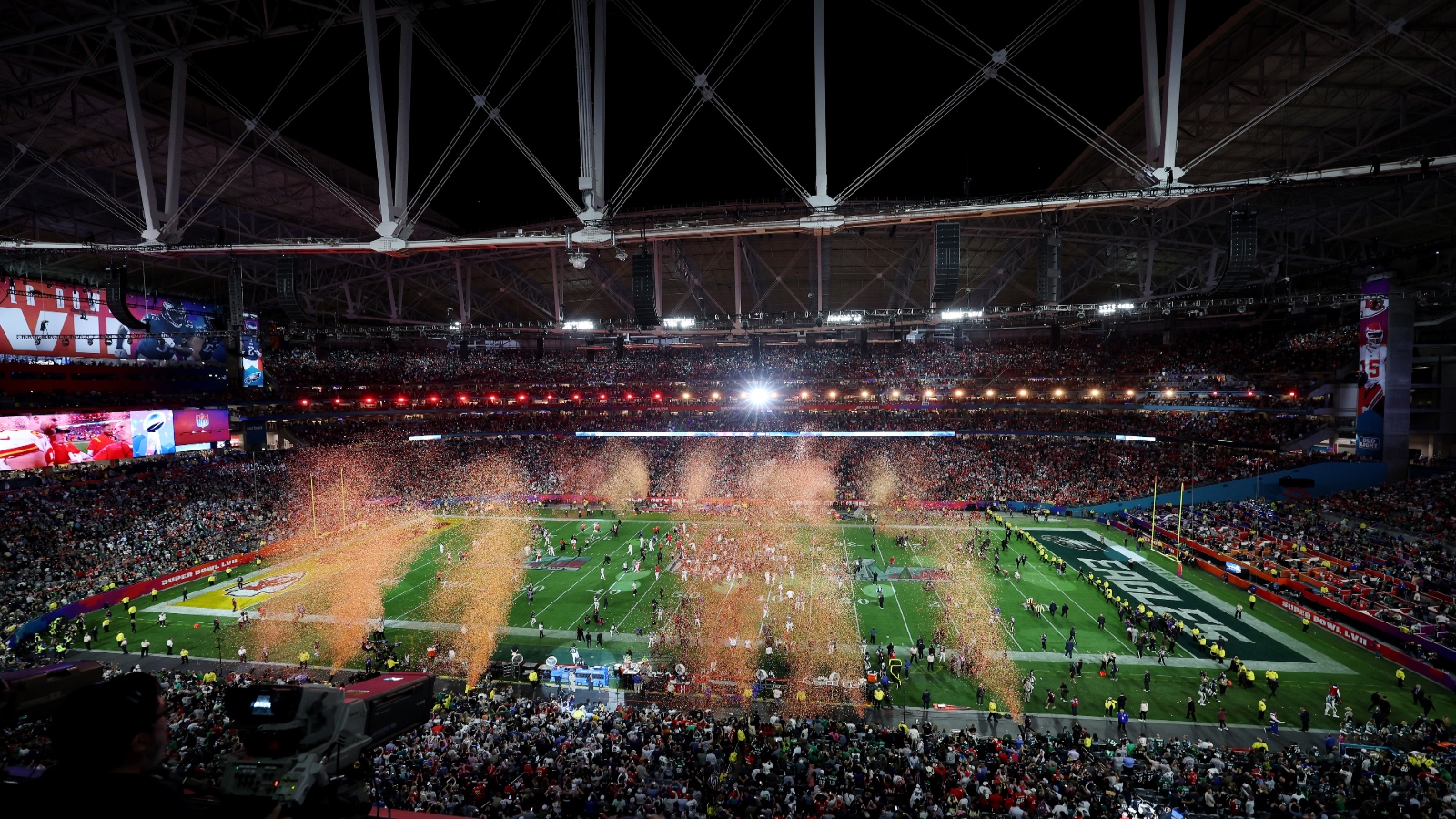It’s Super Bowl weekend in Las Vegas. The city’s bright lights and grand marquees are shining as thousands of fans arrive by air and by car. Taylor Swift almost certainly will fly in aboard her jet, one of about 1,000 private planes expected at local airports. Come Sunday, untold numbers of vehicles will inch into parking lots. Once inside Allegiant Stadium, fans will be greeted by lights and more than 2,200 screens. They’ll order cold beers and hot coffee, scarf down burgers and nachos and other grilled and fried and broiled snacks. The whole place, all 1.8 million square feet of it, is climate controlled for the comfort of 65,000 fans and the players they’ll be cheering on.
In short, the day’s festivities will suck down a lot of energy, around 28 megawatt-hours by the estimate of NZero, the company the Las Vegas Raiders hired to keep tabs on its stadium’s emissions.
That’s a lot of power no matter how you look at it, and the NFL, which is nothing if not quite mindful of its image, has recently rebranded itself as a champion of sustainability. Over the past few years, it has initiated waste-reduction programs, and 23 percent of stadiums are powered by solar energy in some way. Yet even by that measure, the league is touting this year’s Super Bowl, featuring the Kansas City Chiefs and San Francisco 49ers, as the greenest yet, because it will be powered entirely by renewables. The company’s sustainability arm, NFL Green, works with each year’s host city to offset other emissions through community gardens and tree plantings.
“We work to leave a positive ‘green legacy’ in the communities that host our events and tailor our greening projects to the needs of each community,” NFL Green director Susan Groh told Forbes.
The Las Vegas Raiders, which moved into Allegiant Stadium in 2020, have a 25-year contract to buy electricity from NV Energy, which maintains a 621,000-panel solar farm in the desert northwest of Las Vegas. The amount of energy flowing from the panels, along with a smattering of wind, geothermal, and hydro sources, to the game is enough to allow 46,000 homes nationwide to watch the four-hour game, according to the utility.
The NFL doesn’t have much say in the energy mix of a given arena, and Allegiant Stadium, like almost everything else in Las Vegas, will draw from a grid that also relies upon natural gas. But the amount of energy the Super Bowl is expected to use this weekend is roughly equal to the capacity of the solar farm it draws from, says Jonathan Casper, who studies, among other things, the intersection of sports and sustainability at North Carolina State University. The stadium arranged in advance for the massive power usage with NV Energy, and has batteries on site to store the power after sundown.
“The teams look at energy as a major expense,” said Casper. While there might be a little greenwashing going on with the “100 percent renewable” claim, he says it remains a positive sign that sports leagues and their teams are increasingly serious about decarbonization.
“It’s becoming a norm in stadium-building that sustainability is important,” he said.
Most new stadiums are, like the Las Vegas Raiders’ $1.9 billion home, LEED-certified, meaning they do things like source and dispose of food more sustainably, embrace recycling, and use energy-saving tricks like LED lights and water-efficient plumbing. Such things were rare even a few years ago. The Raiders hired NZero to track and independently verify its full scope of emissions, from those generated by its air conditioning and award-winning (really) lighting to the emissions involved in getting everyone there on game days.
“As the biggest sports stage in the U.S., it’s showing we can bring renewable energy to sporting events,” said Adam Kramer, the CEO of NZero. He added that agreements with utilities are a necessary part of this, as it would take a staggering sixty acres of solar panels onsite to achieve the same amount of energy capacity.
What’s happening in the NFL reflects the global momentum pushing sports sustainability forward. A group called the Green Sports Alliance joined the U.N. Sports for Climate Action Framework in 2019, and major teams like the Dallas Cowboys and New York Yankees have signed its pledge to reduce emissions. In Europe, teams are beginning to track their their carbon footprints, with some hoping a more standardized accountability system may be on its way. Fans are encouraged to join the effort by cycling to the game or taking public transportation. Many of the European football, or soccer, clubs have seen their emissions drop as a result, according to one report, though only direct emissions are easily measurable.
Transportation-related emissions are by far the biggest contributor to the sports industry’s carbon footprint. The biggest events, Casper said, will have trouble managing that, because all of the fans being there is part of what makes events like the Super Bowl or Olympics fun.
Turning a ship as large as the NFL or any other sports league can take a long time, but a change in course of a few degrees can go a long way toward raising public awareness of the need for, and benefits of, decarbonization, Casper said. Even if the claim that this year’s Super Bowl is powered entirely by renewables may lean a bit too heavily on PR spin, it does help sell the idea of clean energy in general to 60,000 fans in the stands and millions more watching on TV.
“There are only a few chances where this many people can come together and see that,” Casper said.




